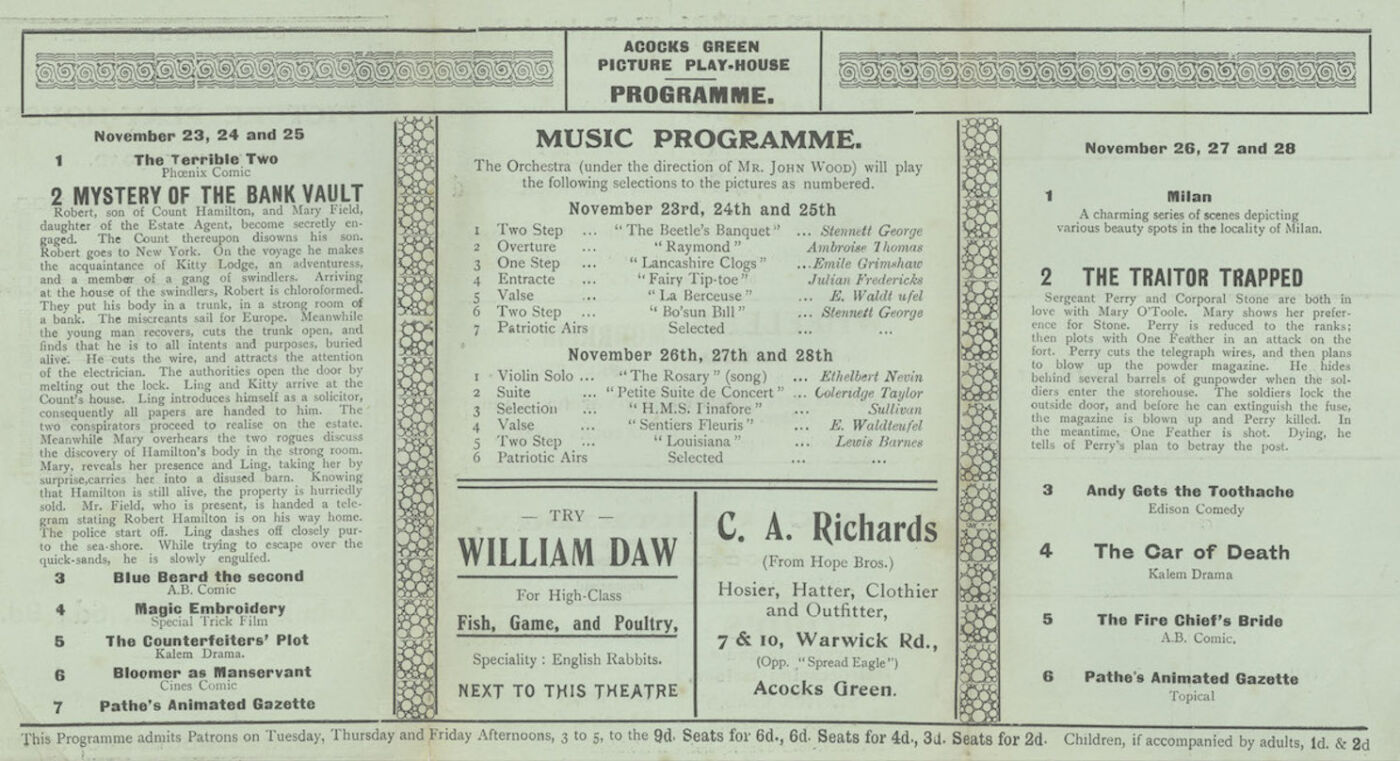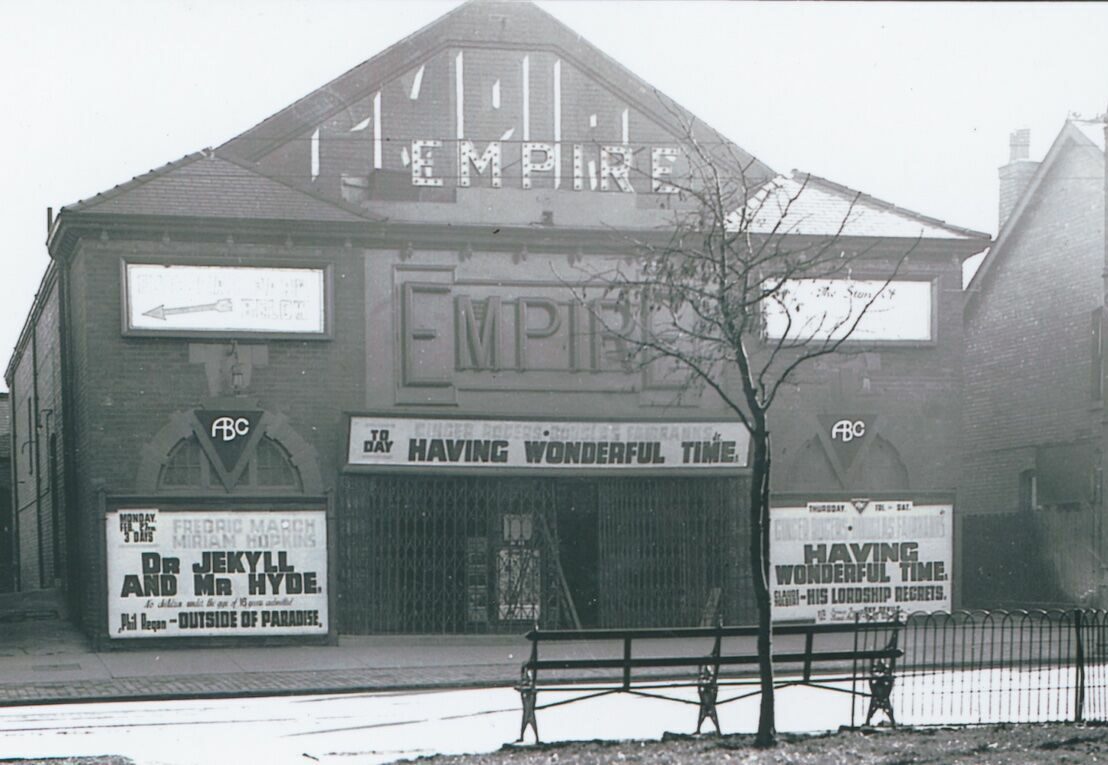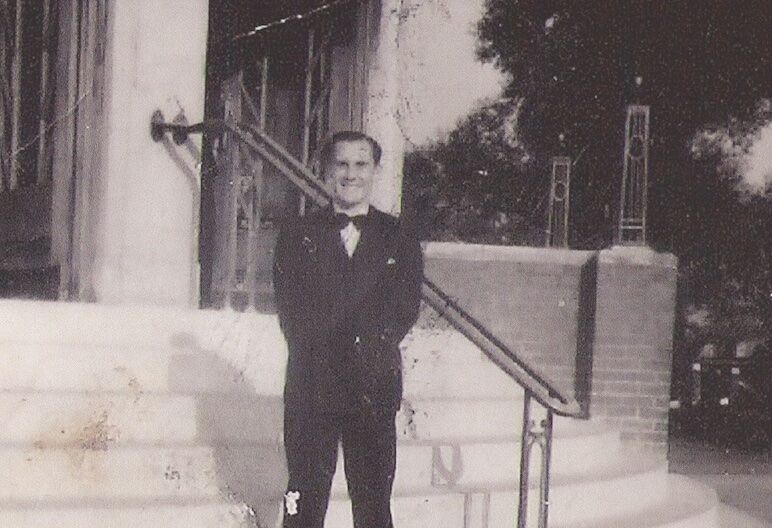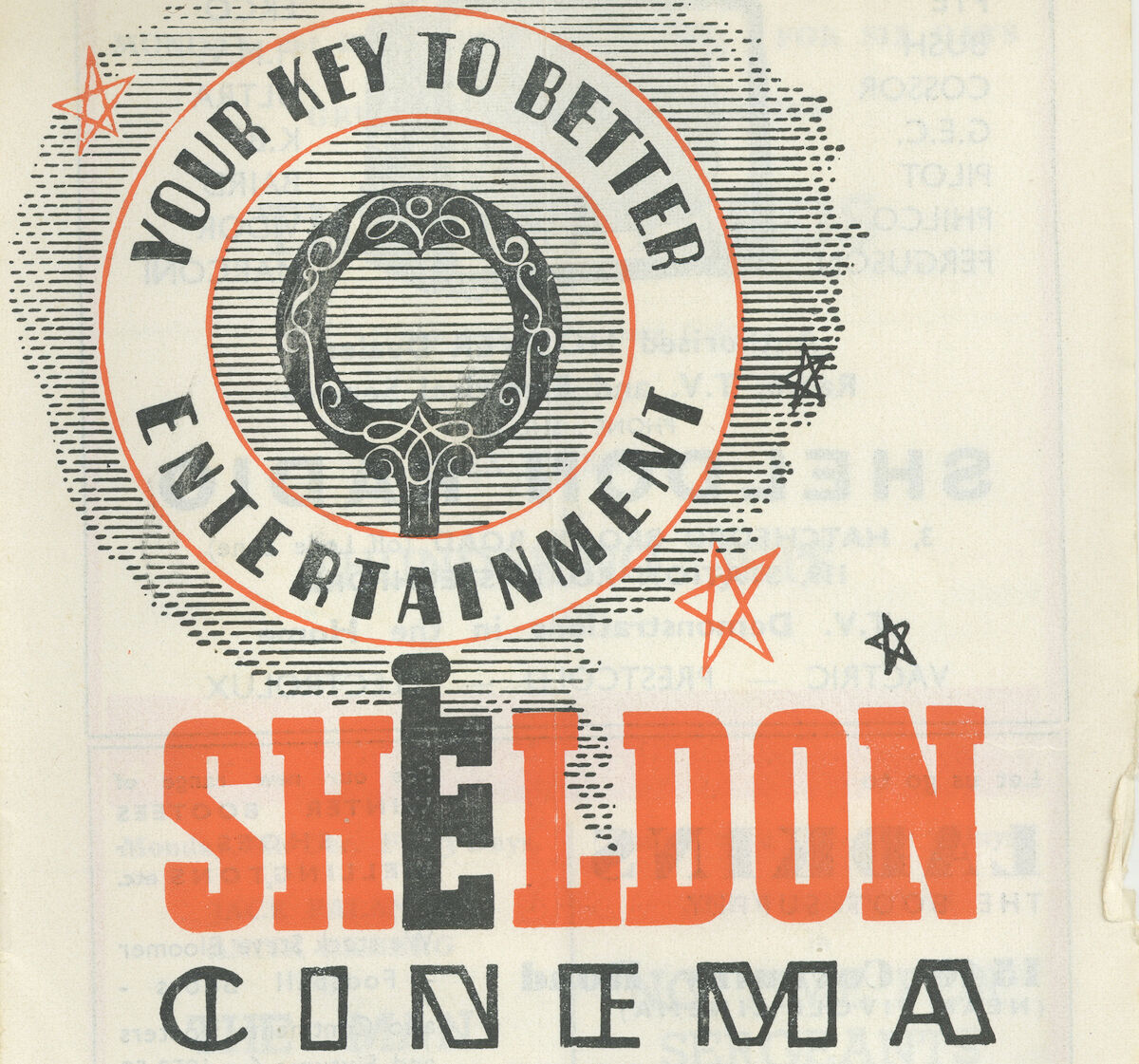Written by Ian Francis
During his visit to Flatpack last May, composer and accompanist Neil Brand talked about the early days of silent cinema in Birmingham. He brought along a stash of 1914 and 1915 programmes from the Acocks Green Picture Playhouse, a suburban 500-seater that didn’t manage the transition to sound and was demolished in the mid-1930s.
Neil kindly lent us these programmes, a selection of which now appear on the Picture Playhouse page. While scanning them, a few things struck us…
- No feature films. Cinemas had only been around for five years at this point, and they tended to screen mixed programmes of melodrama, comedy, newsreel and ‘interest.’ Titles from the latter category include How Fruit is Crystallised, A Trip Through Bosnia and The Rubber Industry of Malaysia.
- Charles Chaplin. In 1914 Chaplin was just embarking on his film career, writing and directing a Keystone comedy short every week for Mack Sennett – a period he later remembered as one of the happiest of his life. He was by no means a household name at this point, but he does get a mention in the Playhouse programme.
- Musical accompaniment. All the soundtracks for the films came from a live orchestra led by Mr John Wood, but you can see from the listings that they weren’t specially composed or improvised. Instead the musicians just played vaguely appropriate tunes to accompany the action onscreen – e.g. classical music for a love story, or ragtime for slapstick.
- Local advertising. As well as the cinema itself, these programmes also record a host of long-lost businesses including the butcher William Daw (‘Speciality: English Rabbits’). You can just see Daw’s premises in the picture of Picture Playhouse below, on the left hand side of the cinema.
With thanks to Neil Brand for the loan and to volunteer Derek Robbins for delving into the history of the building.
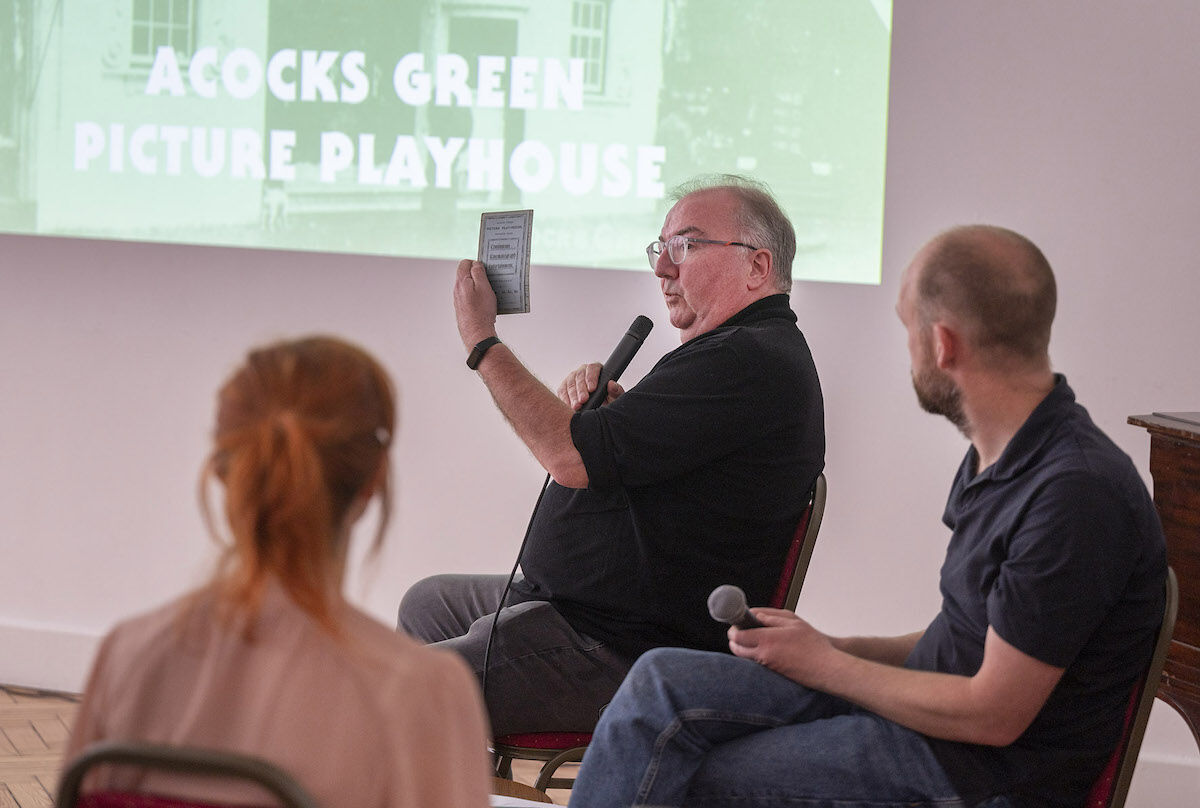
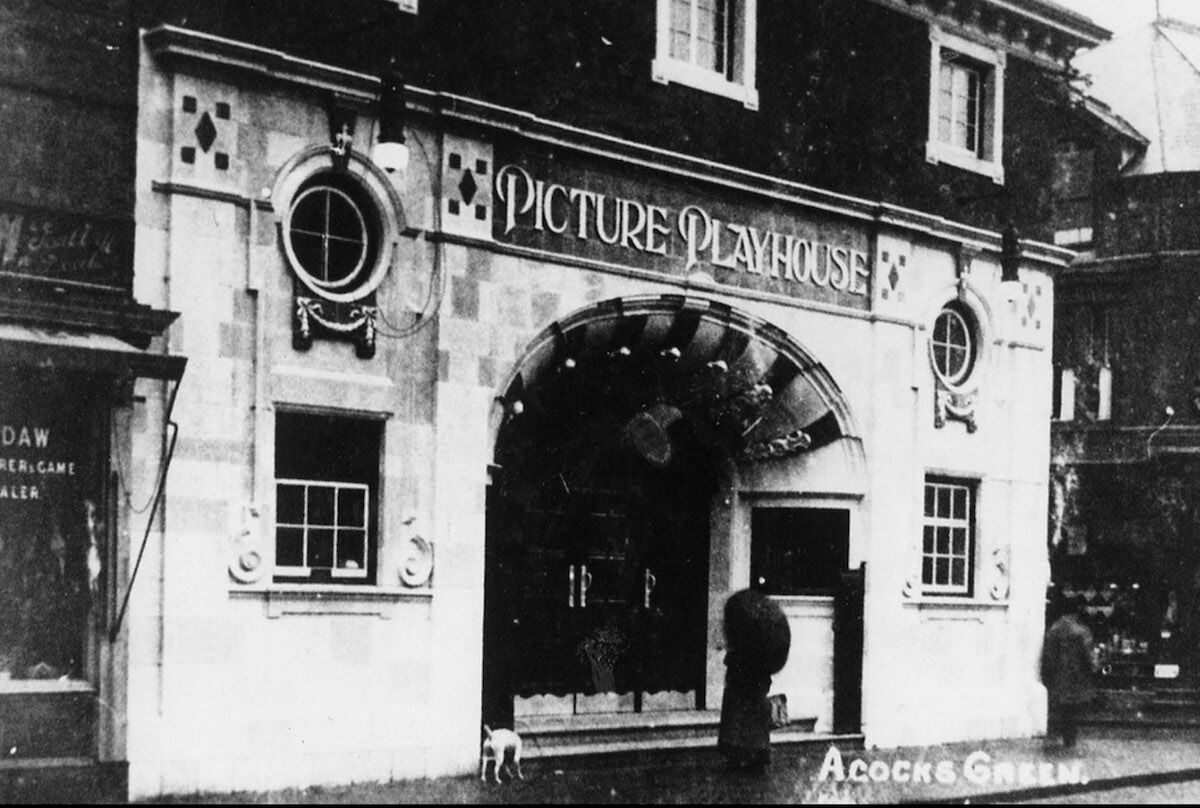
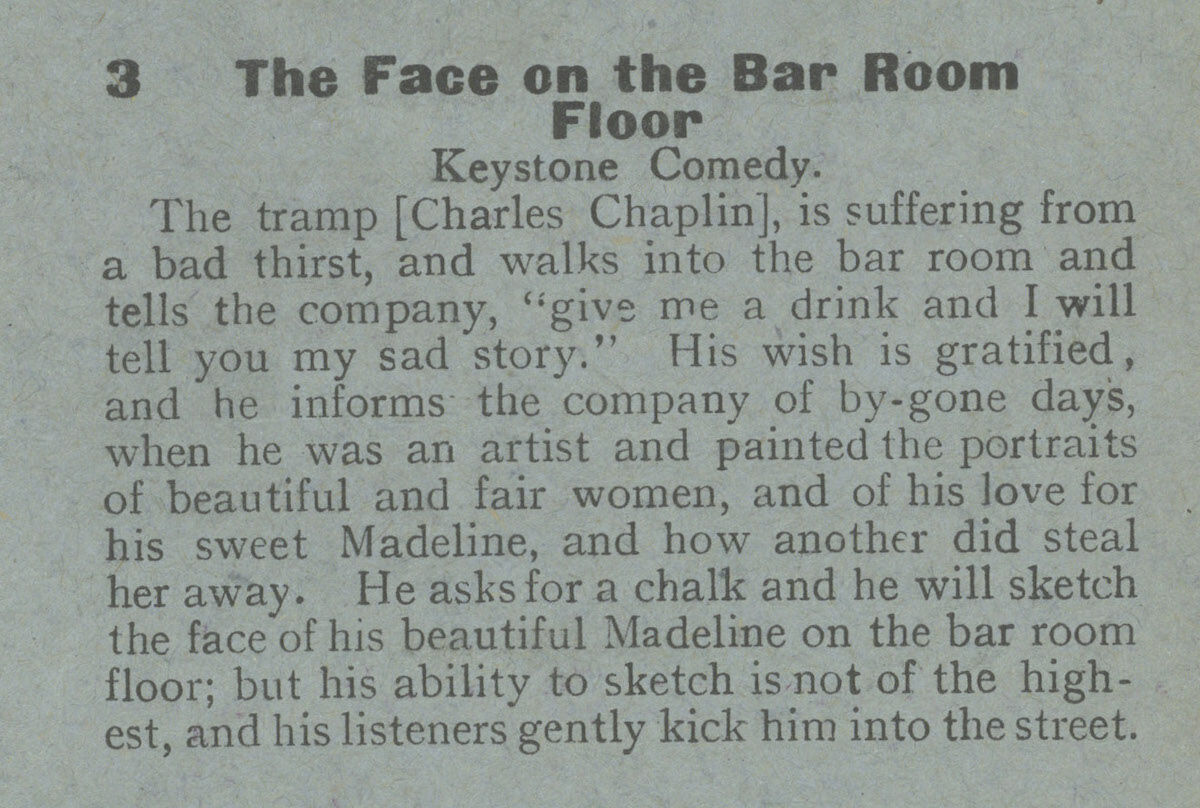
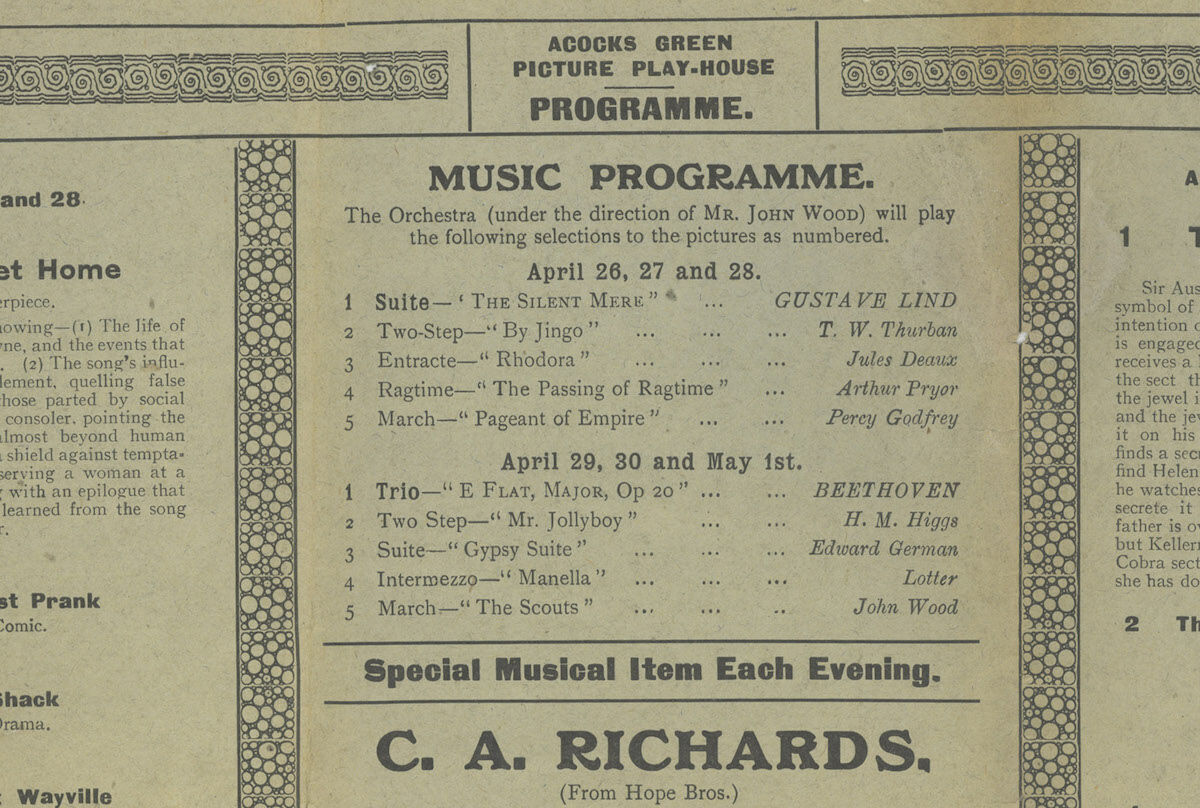
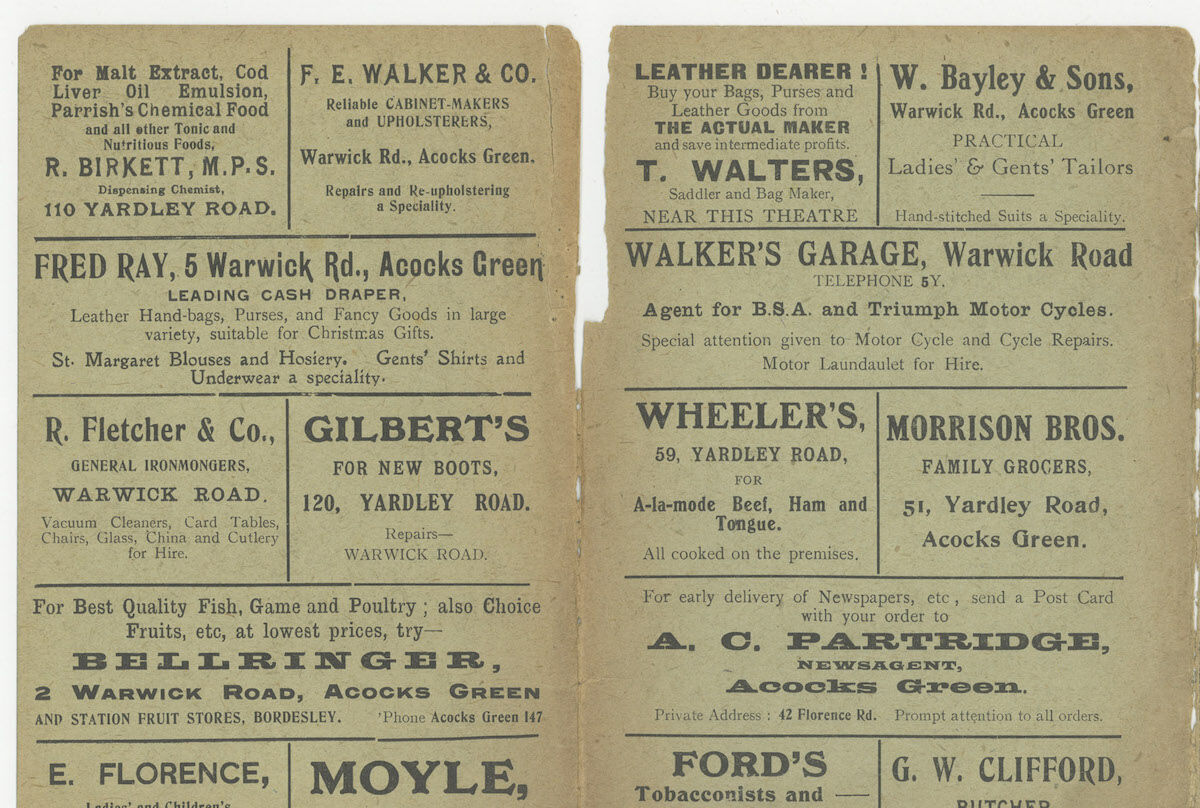
Previous
Next

